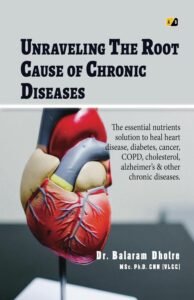We often wonder what is the root cause of chronic diseases. Is it our genes, lifestyle, or something else? The truth is, these conditions are not just about personal health. They are influenced by many factors.
As we dive into this topic, we’ll see why knowing the root cause is important. It’s not just about treating symptoms. It’s about finding the real reasons behind them.
Table of Contents
Key Takeaways
- Chronic diseases are complex and multifactorial.
- Understanding the root cause is key to effective management.
- Lifestyle and genetics both play a role.
- There’s more to chronic diseases than just individual health.
- A comprehensive approach is necessary for solutions.
The Hidden Epidemic: Understanding CHRONIC DISEASES Today
Chronic diseases are a big problem in our modern world. They affect not just people but also our society. They put a lot of pressure on our healthcare system and economy.
Beyond Symptoms: What Makes a Disease “Chronic“
Chronic diseases last a long time and often start slowly. They are different from short-term illnesses. Knowing this helps us create better healthcare plans to tackle these diseases.
The Alarming Statistics in American Health
Chronic diseases are a huge concern in America. They are among the top causes of death and disability. Heart disease, diabetes, and obesity are just a few examples. These diseases harm millions of Americans and also burden our healthcare system.
Why Traditional Approaches Often Fall Short
Traditional healthcare often just treats symptoms, not the real causes of chronic diseases. This might help for a while but doesn’t solve the problem for good. We need a more complete approach that looks at lifestyle, environment, and social factors to really tackle these diseases.
=======================================================================
ROOT CAUSE OF CHRONIC DISEASES
This book is an attempt to help you understand why you fall sick, why you suffer from diabetes, heart disease, etc. To prevent and reverse these diseases is entirely in your hands. You do not need a medical degree to understand the root cause of chronic diseases. “Vitamin and mineral deficiency (Poshak Tattva Ki kami) in the food is the root cause of chronic disease”. Before you eat the food you need to cook it, eat it, digest it with enzymes, and convert it into energy with the help of vitamins and minerals. The outer coating of the rice and wheat contains vitamins, minerals, and fibre. They, the micronutrients, help transform rice and wheat into energy and other structural components. If you remove them from the food grains, to look more appealing in colour or taste the transformation process will be affected, i.e. disease is the result. This book is your guide to understanding how to take control of your health.
====================================================================
The Body in Rebellion: Biological Roots of Chronic Illness
It’s key to know the biological causes of chronic diseases to find good treatments. These illnesses come from a mix of genetics, environment, and lifestyle. We must explore the biological processes behind these conditions.
Genetics: Loaded Gun or Minor Player?
Genetics can make us more likely to get certain chronic diseases. But, it’s important to remember that genetics isn’t the only factor. Genetic factors can be changed by our environment and lifestyle choices. For example, someone with a genetic risk for diabetes can lower their risk with a healthy diet and exercise.
Some important genetic factors include:
- Family history of chronic diseases
- Genetic mutations that affect how cells work
- Epigenetic changes caused by our environment
The Inflammation Connection: Our Body’s Distress Signal
Inflammation is how our immune system reacts to injury or infection. But, chronic inflammation can cause diseases like heart disease, diabetes, and cancer. Poor diet, lack of exercise, stress, and toxins can all lead to chronic inflammation.
Signs of chronic inflammation include:
- Elevated levels of C-reactive protein (CRP)
- Persistent fatigue and joint pain
- Skin issues such as acne or rashes
Metabolic Dysfunction: When Cellular Processes Go Awry
Metabolic dysfunction happens when our body’s cells don’t work right. This can cause insulin resistance, problems with mitochondria, and trouble making energy. Things that can cause metabolic dysfunction include eating too much processed food, not moving enough, and being exposed to toxins.
Common signs of metabolic dysfunction are:
- Weight gain, especially around the belly
- Changes in blood sugar levels
- Fatigue and brain fog
By understanding the biological roots of chronic illnesses, we can start to prevent and treat them. It’s about making smart choices to support our health and well-being.
Modern Life as a Disease Trigger
Our modern lifestyle is full of things that can lead to chronic diseases. It’s important to know what these triggers are and how to avoid them. The way we live, work, and interact with our surroundings greatly affects our health.
The Standard American Diet: Fuel or Poison?
The Standard American Diet (SAD) is high in processed foods, sugars, and unhealthy fats. This diet is linked to obesity, diabetes, and heart disease.
Processed Foods and Inflammatory Responses
Processed foods often have advanced glycation end (AGE) products. These products cause oxidative stress and inflammation. Lowering your intake of processed foods can reduce inflammation.
Nutritional Deficiencies in the Land of Plenty
Even though America has plenty of food, many people lack essential nutrients. It’s important to get enough vitamins and minerals for good health.

Movement Deficit: The Price of Convenience
We rely more on technology and sit more, leading to less physical activity. Moving regularly is key for a healthy heart, metabolism, and mind.
| Benefits of Physical Activity | Effects of Sedentary Lifestyle |
|---|---|
| Improves cardiovascular health | Increases risk of heart disease |
| Enhances metabolic function | Contributes to obesity and diabetes |
| Supports mental health | Linked to depression and anxiety |
Chronic Stress and Sleep Deprivation: The Silent Killers
Chronic stress and not enough sleep are common in today’s world. Stress can cause inflammation and mess with metabolism. Lack of sleep hurts our thinking and immune system.
Our Toxic Environment: Chemicals, Pollution, and Health
Being exposed to environmental toxins is a big health risk. It’s important to reduce our exposure to these toxins to prevent chronic diseases.
In conclusion, modern life has many triggers for chronic diseases. By understanding these and making better choices, we can improve our health.
Beyond Personal Choice: Systemic Factors Driving Disease
Chronic diseases are not just about personal choices. They are deeply linked to our healthcare system and society. To tackle chronic diseases, we need to look beyond individual actions.

The Healthcare Paradox: Treatment vs. Prevention
Our healthcare system often focuses on treating diseases rather than preventing them. This approach can worsen the chronic disease problem. A shift towards prevention could greatly reduce chronic disease burden.
“The U.S. healthcare system is among the most expensive in the world, yet it lags in many health outcomes compared to other developed countries,” notes a report by the Commonwealth Fund. This highlights the need for more preventive care.
Inequality as a Disease Vector
Health inequality plays a big role in chronic diseases. Factors like socioeconomic status, location, and healthcare access affect health outcomes. Those with lower socioeconomic status face higher risks of chronic diseases due to limited access to healthy food and healthcare.
Food Deserts and Nutrition Access
Food deserts, areas with limited healthy food options, are a key example of health inequality. People in these areas often eat fast and processed foods, raising their risk of diseases like diabetes and heart disease.
Economic Stress and Health Outcomes
Economic stress also impacts health. Those struggling financially often experience stress, eat poorly, and lack healthcare access. This increases their risk of chronic diseases.
Policy Failures and Corporate Influence
Policy failures and corporate influence also drive chronic diseases. For example, subsidies for processed food ingredients over fruits and vegetables contribute to unhealthy food prevalence. The food and beverage industry’s influence on dietary guidelines and policies can also hinder healthy eating promotion.
“If we are to address the growing burden of chronic disease, we must rethink our approach to healthcare, prioritizing prevention and addressing the social determinants of health,” said Dr. Linda Fried, Dean of Columbia University Mailman School of Public Health.
Understanding and addressing these systemic factors is key to preventing and managing chronic diseases. This will help create a healthier society for everyone.
Conclusion: Reclaiming Our Health Through Root Cause Solutions
Exploring chronic diseases shows us that tackling their root causes is key. We learn about the mix of genetics, lifestyle, and environment. This knowledge helps us take back our health.
Root cause solutions aim to fix the problems behind chronic diseases, not just treat symptoms. This way, people can make better choices about what they eat, how active they are, and how they handle stress. It also means being mindful of what’s in our environment.
To prevent chronic diseases, we need a plan that involves everyone. It’s about personal effort, community help, and changes in laws. Working together, we can make places healthier. This will help lessen the impact of chronic diseases and make life better for all.
Getting our health back is a team effort. It begins with knowing, learning, and doing something. By choosing root cause solutions and fostering a health-focused culture, we pave the way for a better future. This future is for us and for those who come after us.


